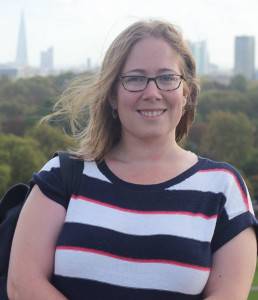 This post has kindly been written for us by Carolyn Twomey, who is currently a Mellon Dissertation Fellow at the IHR (Follow her on Twitter @Carolyngian)
This post has kindly been written for us by Carolyn Twomey, who is currently a Mellon Dissertation Fellow at the IHR (Follow her on Twitter @Carolyngian)
Objects speak to us. The evocative WWI poppy memorial at the Tower of London and the Disobedient Objects exhibition at the V&A are excellent examples of the fascination we have with material objects and the power that ‘things’ bear on our modern constructions of past and present. Objects can overwhelm, soothe, and jar. From the flashing lights of a Leicester Square Saturday night, to the familiar feel of keys in a pocket; from the swipe of an iPhone, to the click of prayer beads; these things—this stuff—are expressions of our everyday lives and cultural consciousness. Part of the postmodern turn in the discipline, studies of materiality and physical spaces in history have the potential to reveal new aspects and attitudes of the lives of historical men and women, some of whom are absent from the usual texts of the historian.
My Ph.D. dissertation at Boston College focuses on the history and material culture of the sacrament of baptism in early medieval Britain. On my year-long Mellon Dissertation Fellowship at the IHR, I am interested in exploring how the ritual of baptism did and did not define a Christian in the post-Roman world: a world typified by diverse localized Christianities seen in both texts and objects. This autumn, I begin by exploring early medieval baptismal texts as objects in London, Oxford, and Cambridge. These eleventh-century pastoral handbooks saw a variety of hands-on use; for example, the Red Book of Darley (CCCC 422) is a particularly messy manuscript. Most likely used by a parish priest, the pages that contain the liturgical ordines for the blessing of the holy water of baptism are folded, torn, stitched, water-stained, and dark with oil from the hands of countless local baptizers. The text is not only an Anglo-Saxon copy of the baptismal ceremony in Latin and Old English, but also a portable object of the ritual that would have been carried, dropped, seen, and splashed during the public religious performance.
Medieval men and women also inscribed themselves onto their landscape. As historians, we can read these physical architectures and spaces left behind to draw conclusions about their political and cultural attitudes. The placement of churches near prehistoric barrows, reuse of Roman ruins, and adoption of new artistic motifs, are examples of early medieval acts of (re)negotiation through which historians explore how communities understood themselves and their place in the world. To that end, I will be driving—perilously on the wrong side of the road for this American—to sites of Anglo-Saxon and Norman stone baptismal fonts. I will continue research begun this past summer and examine them for their iconography, monumentality, and for what they can tell us about baptismal administration and local stone production at the close of the early medieval period.
One of the most unexpected and enjoyable aspects of my research so far has been my interaction with local parishioners and staff during my visits to baptismal sites. In the process of photographing and sketching East Yorkshire fonts with figural carvings, I’ve chatted with the local ladies of the parish over a mandatory cuppa before receiving the massive Victorian keys to the church doors. One vicar even provided me with a comprehensive tour of every stone in his medieval church as well as a cardboard box full of what local people had written about the font since the nineteenth century. Having these conversations not only gave me the chance to talk with wonderful people, but also reminded me that the history I am pursuing is profoundly rooted in the local community. These men and women are not just custodians of a museum, but active participants in the life of their church—people who had been baptized and had their children baptized in the very fonts I am studying. Their lives and names have been figuratively—and, at times, literally—carved into the church building. Many layers of identity have been mapped onto these objects and spaces during and after the Middle Ages; part of my job is to navigate these fascinating layers and uncover what they can tells us about medieval religious practice.
In the meantime, you’ll find me in the British Library, British Museum, and the IHR library, investigating the diverse medieval materialities of baptism while negotiating my own new academic environment through the modern objects and physical spaces of London.
